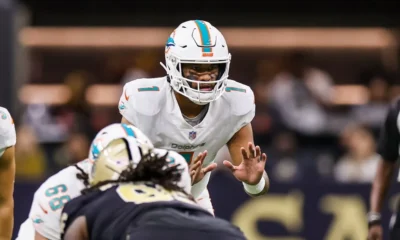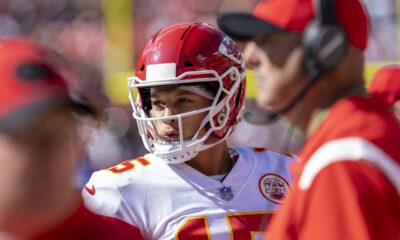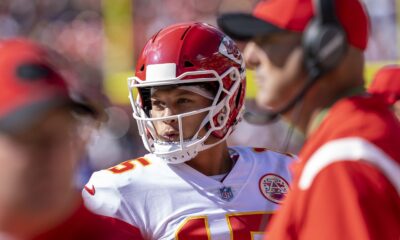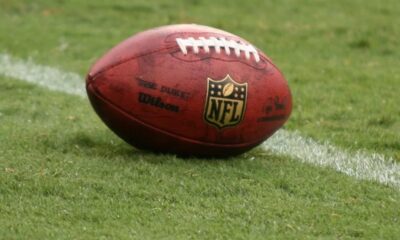Golf
The dispute between the PGA and the LIV parallels the creation of the Super Bowl. Money and desire changed the history of American sports
The future of world professional golf is on the brink of uncertainty. The raging war between the PGA Tour and LIV Golf has so far counted only casualties, as wars tend to do. Although the current situation seems utterly hopeless, events in the sport’s history show some hope.
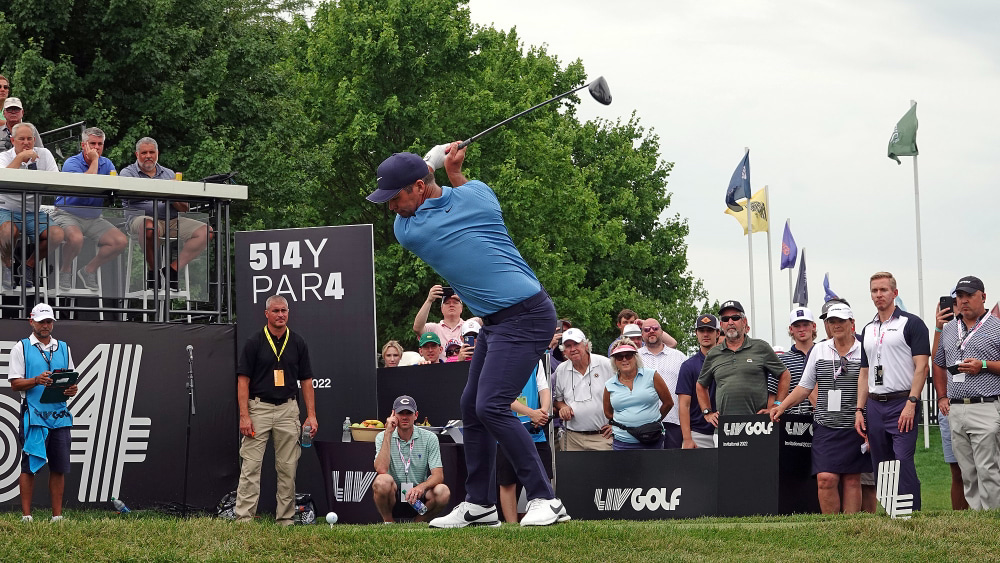
The future of world professional golf is on the brink of uncertainty. The raging war between the PGA Tour and LIV Golf has so far counted only casualties, as wars tend to do. Although the current situation seems utterly hopeless, events in the sport’s history show some hope. That hope lies in the Super Bowl, which is considered the absolute pinnacle of the American sports scene. But once upon a time, that was far from the case.
For context. On the one hand, a powerful player called the PGA Tour refuses to share the Everest of the professional golf world. On the other is LIV Golf, an innovative product that has an almost bottomless supply of Saudi Arabian funds in its investment pot and wants to become the best and most attractive thing the world has to offer golf fans.
The situation between the PGA Tour and LIV Golf is not only heated, but continues to escalate in its war and media conflict. Without a doubt, it can be described as the biggest crisis in the history of the sport. Many experts have given serious thought to the current situation, only to subsequently state that it is currently an intractable problem, without the slightest hint of a solution.
The most crucial issues in the whole conflict are decided behind closed doors in the courtroom. When? Well, that is not an answer at all. Some talk of a multi-year process.
The golf professional world is on its knees and beginning to languish. The PGA Tour’s glitziest circuit to date is gradually losing ground. It has already lost a number of elite players and is also reporting its first losses in sponsorship and viewership. Even so, the PGA is not about to back down. Not an inch.
In the media world, it bases its firm stance primarily on moral principles, calling the money invested in the new project from Saudi sources bloody. Can we find common ground?
PGA boss Jay Monahan says no way. LIV boss Greg Norman, for his part, has said that their product is growing and that he has lost patience in his pursuit of a possible collaboration.
HOPE LIES IN HISTORY
Do you feel that this is an issue that has escalated as a result of modern times when the sport has become a mere business? That sometime in the past such a thing would not have been possible? Then you are mistaken. Of course, to find the connection, we have to go back to 1960.
Look at the big event that is the NFL’s American football finals, called the Super Bowl. You may not be a football fan, but you’ve certainly come across the term before. The Super Bowl is the biggest event in the combination of sport and business. You won’t find anything more spectacular in this regard in the US.
An estimated 150 million viewers worldwide watched this circus in early 2022. By comparison, the bigger show is surely the World Cup final, which will draw around half a billion viewers to their TV screens. But that’s not the point at all right now.
In 1960, things were very different. Back then, American football was not nearly as popular in the US as it is now. It was estimated to be the fourth most popular sport in the country. Even then, the NFL suddenly recognized a new competitor in the sports market called the AFL.
The AFL was founded by Texas billionaire businessman Lamar Hunt, whose family made huge money in the oil industry. Hunt could be described today as the chairman and CEO of LIV Golf from Saudi Arabia, Yasir Rumayyan. His plan was that he wanted to start an expanding franchise in Dallas, Texas, or buy an existing NFL organization and move it to Dallas.
However, the NFL was not interested in expansion at the time, so Hunt encountered stiff resistance in each of his attempts to enter the NFL, reminiscent of the resistance of PGA Tour Commissioner Jay Manahan in the golf world today. A disgusted Hunt thus hit upon the idea of starting his own professional football league to compete with the NFL, determined to achieve success at any cost.
Today’s creators of LIV also attempted to invest in the existing professional golf ecosystem through Saudi funding, but ultimately their idea anchored on the creation of their own organization, LIV Golf. In short, LIV’s leaders saw resistance from the PGA Tour and DP World Tour from the beginning that would not allow them to achieve their dreams.
Whether anyone likes it or not, Saudi and Texas money plays exactly the same role here. Both sources come from oil production and sales, both sources want to fund a product that wants to become a billion dollar business in the sport.
Although the NFL later learned of Hunt’s aforementioned plan, it changed its mind and wanted to give the Texas tycoon the green light. The latter, however, already considered his advanced ideas with the AFL project, for him, to be far more lucrative. It was too late. In a way, you could say that this was one of the major turning points in the later rise of the NFL.
That team of today’s Cowboys in the NFL did eventually come into being. Hunt, however, was already running an organization called the Dallas Texans. In 1960, the AFL also took off with a total of eight new teams. At the time, the whole process was hailed by the public as the undoing of professional American football in the US.
Interestingly, the NFL was somehow set up and used the same business model from the beginning. NFL owners spent as little money as possible on their players to maximize profits for the owners and the league. This model worked, however, as the NFL had no competition until the fateful 1960s. Indeed, much like the PGA until recently, before the advent of LIV Golf.
The owners of the newly formed AFL, however, were well aware of this. They knew full well that they had a unique opportunity to change that. In addition to bigger payouts for players, the AFL came up with a more attractive model in spectator entertainment. So much so that the much-criticised competition found its audience.
Like the LIV, the AFL was well aware at the time that it would suffer large financial losses in the early years of its existence, mainly because of the large initial costs. They were prepared for this. It was therefore absolutely crucial for the AFL to find owners for its franchises who would be deep in their pockets and not be deterred by the initial sunk costs.
The LIV is now taking a similar path. It wants its teams to become ‘stables’ (a specific group of players) owned by a powerful giant, such as Ferari, Alpine or Red Bull Racing in the case of motorsport. These team owners will also finance the running of their teams so that their team remains at the top, competitive and striving for big wins.
In addition, the AFL has come up with a clever tactic of reaching out to destinations that have either lost NFL franchises for a variety of reasons or have not been satisfied with the operation of traditional competition. Similar to the LIV announcing events in these weeks in places where the best golf with elite players would otherwise never get to. Australian Cameron Smith, for example, could only dream of a similar event in his home country until recently.
However, it would all have been completely unsustainable if not for a brutally fat, almost bottomless resource. As we mentioned above, Texas millions have just turned into Saudi millions after sixty years. It is precisely because of its solid financial foundation that the LIV can think of a future, despite being reviled by much of the golf world today.
Back to history. In cities where the AFL has operated, however, owners have come to wonder if it is right and prosperous to keep their franchises in cities where they directly compete with the NFL.
Lamar Hunt eventually moved the Dallas Texans to Kansas City in 1963, and other owners took a similar route. So while the organizations that owners marked for unsustainability moved, other organizations that had a reasonable chance of staying in their cities stayed.
But otherwise, the AFL also targeted destinations where the NFL was gradually withering away. The LIV is doing similarly in its business plan.
MEDIA PRESSURE LIKE A CARBON COPY
The repetition of history continues. The NFL was already established, of course, so it also had an established monopoly in the media market. Most professional football newsrooms at the time continued to write slanderous columns denigrating the AFL as an “inferior” or “second-rate” product. So thoroughly and doggedly that they kept their audience largely on their side for several more years.
With exactly the same dedication as the LIV media, who have been working for the PGA Tour for years, did in the first year of the LIV’s existence. However, Jay Monahan and Co. add further value to the whole tactic by constantly pointing out the country where the funding is flowing from. Saudi Arabia is like a red rag to a bull for many American citizens, with the terrorist events of 9/11 contributing greatly to that.
Yet, despite all these negative forces and the media smear campaign against the AFL, the league ultimately succeeded.
The turning point in the whole story is marked by the AFL’s lucrative signing with the NBC television company in 1965. It was a multi-year contract, which indicated a very bright future for the AFL. It gave the league the legitimacy it sought. Suddenly, when the league began to be broadcast on national television, even those who hadn’t believed the AFL had any future at all began to watch.
Moreover, this was at a time when coverage of live sports in the US was beginning to take off. The AFL was working, making money, thriving, being watched, despite being labelled a villain for the last few years.
So what were the key points that led to the AFL’s flourishing? Here, too, you can look for connections to the LIV’s take-off::
Money:: Lots of money from the oil industry and wealthy owners who want their hobby to be a business at the same time as not being afraid of losing money. And most importantly, they are able and determined to keep a loss-making product going until it starts making a profit. Even for a few long years.
Passionate people:: It wouldn’t work without desire and passion. It took people like that who not only have a lot of money, but are unstoppable in their dreams. They have a vision and a set goal. Their work is their life. They don’t like to lose, like Yasir Rumayyan, whose aspirations to pursue his dreams we wrote about some time ago.
Innovation: A new, more entertaining style of presenting sports to consumers that has been presented in one way for years. And also targeting a younger age audience.
Geography: Offer your product where there is interest or simply where it is lacking. In a business context, to put it lightly – to take advantage of a hole in the market. Similar to the way new franchises are awarded in the NHL today (Las Vegas, Seattle).
Compensation to players: Offer better (not only) financial terms for players who are willing to take some of the risk by deciding to move to a new league. Convince them that this path has a future and values that are not visible at first glance.
Television contract: Offer your product in the easiest way for consumers. This is virtually the only point LIV hasn’t checked off so far. However, according to their representatives, such a contract is imminent. It is probably to be expected that sooner or later it will happen. Why? Because money.
UNSUSTAINABLE PRODUCT
It was clear that the current model, with two elite competitors in the US market, was unsustainable in the long run. Everything, of course, played in the AFL’s favour, as they were the richer ones. The NFL realised that it could not compete financially, which may have proved crucial in the end. It remains to be seen if the PGA Tour will come to a similar realisation.
The latter, unlike the NFL, has been able to increase bonuses and money intake for its players. But the question is whether this is a sustainable path, moreover, at a time when many of the players who have actually fed the American Tour for the past years have fled the PGA.
Now, admittedly, the PGA Tour is largely trying to build some new concept around legends Tiger Woods and Rory McIlroy. But at the same time, it’s important to remember that Tiger Woods’ health issues won’t allow him on the course as much, and that Rory McIlroy is a powerful, but not nearly as overwhelmingly powerful, magnet as Tiger Woods. Other possible extra magnets from the top tiers of the world rankings are already playing on the LIV side.
To survive, the NFL has been forced to change its strategy. In 1966, it began negotiations with the AFL about a possible merger of the two leagues. The NFL had reached the point that it would either have to accept the AFL into the ecosystem or their product would end up in the annals of history.
Members of the original two Dallas franchises, Lamar Hunt (owner of the Chiefs) and Tex Schramm (president of the Cowboys), began meeting to find a common way to get the most out of both businesses. 8. in 1966, the job was done. All the existing franchises for both leagues were retained and they merged to form an expanded league called the NFL.
Until 1970, the league was split into two conferences (AFC and NFC), their plan was to expand to other American cities in the following years. The most significant agreement of the whole grand deed was when the two leagues agreed to play an annual AFL vs. NFL game, where the best AFL team would play the best NFL team. You guessed right, this event is now known as the “Super Bowl”.
Now we need only bring the whole process into modern times, where the PGA Tour and LIV Golf are pitted against each other in a similar conflict. One quite noticeable difference is that the LIV is currently not just targeting the US market, but wants to create a global golf league. Thus, a similar merger between the PGA and the LIV would probably not just upgrade professional golf in the US.
We’ll write more about what this could theoretically look like some other time. Anyway, in conclusion, we just need to ask a simple question. Would the modern NFL have become the biggest sporting event in the US if other rich dreamers hadn’t come along?
Source: PGA Tour, LIV Golf, medium.com

